By mid-2025, solar photovoltaic (PV) technology is no longer simply a cost-effective alternative—it is a net-positive engine for global economic, environmental, and social transformation. With over 10,000 GW of installed capacity and annual growth exceeding 26%, the PV sector is playing a central role in clean energy transitions. Here today in Steelbridge Export we learn more.
Solar PV’s Net Benefits Are Supercharged
By mid-2025, solar photovoltaic (PV) technology is no longer simply a cost-effective alternative—it is a net-positive engine for global economic, environmental, and social transformation. With over 10,000 GW of installed capacity and annual growth exceeding 26%, the PV sector is playing a central role in clean energy transitions. This article builds upon earlier studies (e.g., MIT 2020) and introduces an updated analysis that accounts for five years of rapid technological, environmental, and market evolution.
Expanding the Analysis Framework
Earlier assessments of solar PV focused predominantly on three value dimensions: market-based electricity generation, health benefits through pollution reduction, and climate change mitigation. In 2025, any comprehensive benefit-cost assessment must also include:
- Land-use impact and opportunity cost
- Local property value changes
- Socioeconomic equity in access and distribution
- Technology integration such as bifacial panels, perovskite coatings, and energy storage
- Ecological co-benefits like agrivoltaics and pollinator habitats
- Grid resilience and decentralized deployment in remote or underserved regions
These additions ensure that solar PV is evaluated not just as a source of electrons but as a transformative infrastructure that reshapes systems across multiple domains.
 Key Findings from 2025 Data
Key Findings from 2025 Data
A multi-variable study conducted across 12,500 locations in the U.S., Europe, and MENA reveals that:
- Net economic benefit is positive in over 85% of surveyed regions.
- Bifacial PV systems paired with battery storage yield up to 20% higher energy efficiency and 12% lower LCOE (~$0.058/kWh) in high-radiation zones such as Arizona, South Australia, and Saudi Arabia.
- Agrivoltaic farms in southern France, California, and Morocco reported dual-income streams (crop + power) with no productivity loss in 73% of pilot sites.
- Floating solar (FPV) on reservoirs in Singapore, Egypt, and Portugal shows a 5–10% higher energy output due to thermal regulation while conserving freshwater.
- PV + Storage microgrids have become economically viable in sub-Saharan Africa and rural South Asia, providing round-the-clock electricity access to over 80 million new users.
The integration of advanced analytics, artificial intelligence in predictive maintenance, and modular deployment strategies have significantly enhanced overall performance and cost-efficiency.
Environmental and Social Enhancements
Beyond pure economics, the sustainability profile of PV in 2025 has matured:
- Land preservation: Strategic siting prioritizes degraded or non-arable land, with dual-use models (agriculture + solar) now institutionalized through planning guidelines.
- Pollinator corridors: Over 40% of new solar farms in the U.S. Midwest and European Union are co-developed with native plant habitats to promote pollination and ecological recovery.
- Community ownership and shared solar: Initiatives in Germany, Chile, and the U.S. enable residents to co-invest in PV arrays, leading to increased acceptance and profit-sharing.
- Localized resilience: Microgrids powered by PV and battery storage now supply hospitals, schools, and emergency facilities, especially in disaster-prone and conflict-affected zones.
- Educational impact: PV integration in schools has grown, creating hands-on STEM learning opportunities and local technical job creation.
Challenges Still in Play
Despite tremendous gains, the sector continues to face roadblocks:
- Grid bottlenecks and curtailment: High PV penetration without adequate grid upgrades causes energy waste and market distortions.
- Policy lag and inconsistency: Some jurisdictions maintain fossil fuel subsidies or have regulatory barriers that slow PV deployment.
- Community resistance: In areas lacking public engagement or cultural consideration, opposition remains an issue, especially around land use and aesthetics.
- End-of-life (EoL) recycling: The lack of scalable recycling facilities for silicon panels and associated components remains a looming concern, with an expected 78 million tonnes of waste projected by 2050.
- Material security: The solar supply chain remains vulnerable to geopolitical tensions, particularly concerning rare metals like tellurium and indium used in advanced panels.
Policy Recommendations
To fully capture the benefits and address the persistent barriers, 2025 policy frameworks must evolve:
- Smart siting incentives: Provide location-specific subsidies or fast-track permits for projects with high net-benefit scores, particularly on brownfields, rooftops, and degraded land.
- Equity-focused financing: Expand zero-interest green loans, subsidies, or community solar credits to support low-income and marginalized households.
- Support for innovation: Increase public-private R&D funding for next-gen solar technologies like tandem cells, floating PV integration, and AI-based performance optimization.
- Grid modernization: Invest in digital infrastructure, real-time demand management, and advanced inverters to integrate distributed generation effectively.
- Circular economy policy: Implement mandatory end-of-life protocols, producer responsibility regulations, and investment in recycling technologies.
- Public engagement strategies: Mandate early-stage stakeholder consultation and integrate cultural and environmental sensitivity into solar farm design.
 Future Outlook
Future Outlook
As we move toward 2030 and net-zero targets, the role of solar PV will only deepen. The International Energy Agency projects that by 2030, PV could supply over 20% of global electricity if current trends continue. The combination of falling costs, systemic integration, and socio-environmental co-benefits positions PV as more than a technology—it is a pillar of future society.
Expect continued expansion in:
- Agri-PV in food-insecure regions
- Floating solar in water-stressed areas
- Perovskite-commercialized solutions with >30% efficiency
- AI-integrated grid-balancing systems
- Citizen-owned renewable cooperatives
Conclusion
Solar PV technology in 2025 is a multi-dimensional asset, delivering far more than cheap, clean electricity. It is reshaping land use, agricultural models, local economies, and environmental stewardship. To fully realize its potential, stakeholders must align innovation, equity, and governance in one integrated agenda.
With correct execution, solar PV will remain a cornerstone of sustainable development through 2030 and beyond.
Source: yenisana.com
FAQ
- What are the main benefits of solar PV technology in 2025?
By 2025, solar PV delivers net-positive impacts across economic, environmental, and social domains. Key benefits include reduced electricity costs (as low as $0.058/kWh in optimal zones), land-use efficiency via agrivoltaics, energy access in remote regions through microgrids, and increased biodiversity via pollinator-friendly solar farms. - How has solar PV technology evolved since 2020?
Between 2020 and 2025, solar PV has integrated bifacial modules, perovskite coatings, AI-based predictive maintenance, and floating solar platforms. These advancements have improved system efficiency, reduced levelized cost of electricity (LCOE), and expanded deployment in challenging geographies like deserts and water bodies. - What role does solar PV play in socio-economic development?
Solar PV contributes to local economies by creating technical jobs, enabling educational integration, and promoting energy equity. Community solar projects in Germany, Chile, and the U.S. now allow co-ownership models, while PV microgrids power critical infrastructure in underserved and disaster-prone areas. - What are the key challenges facing solar PV deployment in 2025?
Despite its growth, solar PV still faces challenges such as grid congestion, inconsistent policy support, end-of-life recycling gaps, material supply vulnerabilities, and localized opposition. These issues require coordinated governance, technological innovation, and public engagement strategies. - Why is solar PV central to achieving net-zero targets by 2030?
Solar PV’s scalability, cost-efficiency, and integration with AI, storage, and agriculture make it essential for decarbonization. With projections indicating over 20% of global electricity from PV by 2030, it is a foundational technology for climate goals, energy resilience, and sustainable infrastructure.
read more: Hybrid Solar Storage Plant (80 MW PV & 20 MWh BESS) Project Report




 Key Findings from 2025 Data
Key Findings from 2025 Data Future Outlook
Future Outlook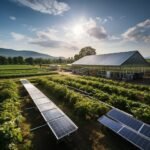
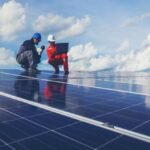
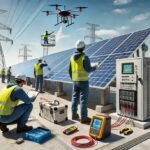
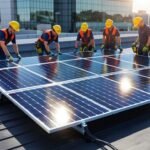
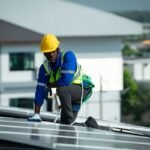

1 Comment
[…] Related Article: In 2025, Solar PV’s Net Benefits Are Supercharged by Technology, Equity, and Smarter Policy […]